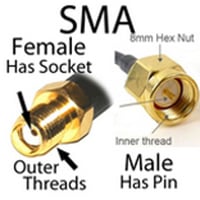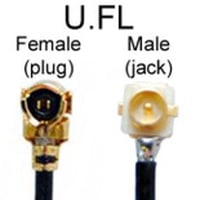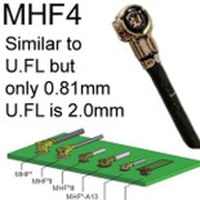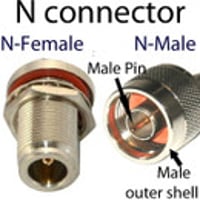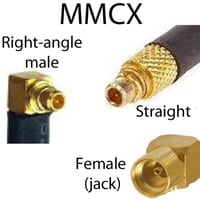Flat RP-SMA Antenna Cable: Male To female 10" 18" 30" For Window or Door
- SKU:
- RSmRA18iRSfF
- Availability:
- In stock
- Weight:
- 0.05 LBS
Data Alliance
Flat RP-SMA Antenna Cable
Our unique flat cable design allows it to fit seamlessly under or over windows and doors, setting it apart from traditional cables.
- Our flat antenna cables are weatherproof and designed for your convenience. They can quickly flatten to pass under a window or door, making installation a breeze.
- The length of the cable is from the end of the connector to the end of the connector.
- Connectors: one is male & one is female
- The following versions have RP-SMA Male right angle on one end and RP-SMA Female on the other: 10-inch, 18-inch, 24-inch, on one end and RP-SMA Female on the other: 10-inch, 18-inch, 24-inch, and 30-inch. The seven-inch version has straight (not right-angle) connectors on both ends.
- See SMA for the version of this cable (LoRaWAN hotspots/access points have SMA-female antenna connectors).
- See the RP-SMA-male to N-male version of this cable.
- See our Helium accessory items directory for the range and extension of Helium miners.
- Almost all Helium miners have RP-SMA-female antenna connectors.
- Data Alliance's high-quality soldered terminations of RP-SMA connectors with soldering provide a low-loss connection with discontinuities kept to a minimum.
It eliminates drilling through walls and conveniently runs under or over windows and doors.
Don't worry; our cable is built to last. It's designed to flatten when a window or door is closed, withstanding the repeated rigors of daily use.
RP-SMA male connector fits the Helium miners' antenna connectors, which have an RP-SMA-female connector. This includes Bobcat miners, Sensecap miners, and all other Helium LongFi miners.
Compatibility with wireless standards and applications: Our SMA to RP-SMA extension cables' range of frequency band compatibility (from 0 to 18GHz), consistently low broadband VSWR, and impedance matching to 50 Ohm antennas and cables make them suitable and compliant for all the above applications.
- Our antenna cable is compatible with Helium miners and various devices, including popular WiFi standards, cellular wireless applications, and IoT wireless technologies.
It is also compatible with all of the following:
-
- All WiFi standards: 2.4GHz and 8GHz applications: Wi-Fi HaLow 802.11AH, Wi-Fi 8, WiFi 6E, 802.11AX, 802.11AC, 802.11N, 802.11G, 802.11B, 802.11A
- Cellular Wireless LTE / 4G, GSM / 3G WiMAX, 5G: Data and voice applications
- IoT wireless, automation & Machine to Machine (M2M): Bluetooth, ZigBee, Wi-Fi HaLow, RFID, LoRa, LTE-m, NB-IoT.
RP-SMA female connector includes a bulkhead nut and washer for mounting & waterproofing:
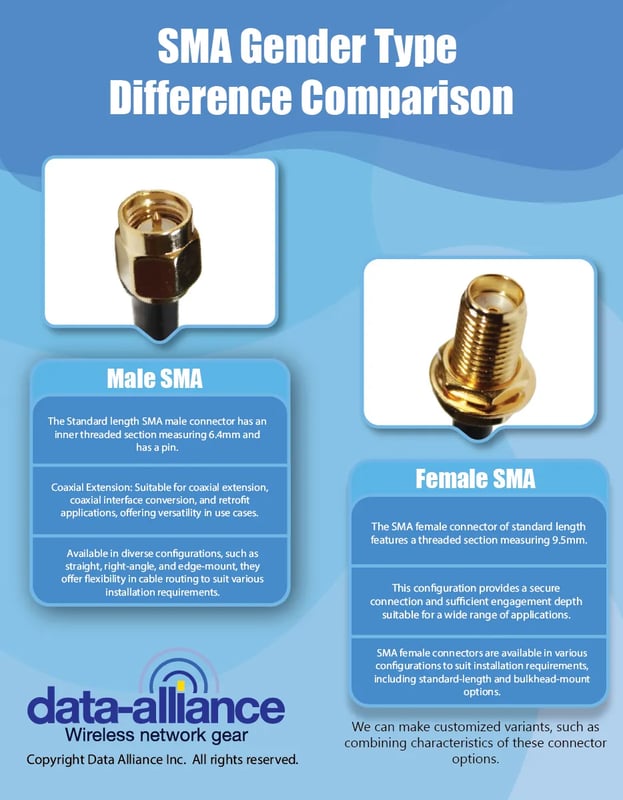
-
- This can be used to mount the connector (and thus the cable) on the wall of a network enclosure (to weatherproof the cable connection) or on a case, panel, or Printed Circuit Board (PCB).
- Weatherproofing: Seal the hole where the female connector is mounted by placing an O-ring between the enclosure wall and the bulkhead nut & washer on the female connector.
- Our standard RP-SMA-female connector (threaded part) length is 3/8 inches. We also offer a more extended option, 14.5mm. The longer option has an O-ring embedded in the flange to waterproof the port where the cable enters a network enclosure.
RELEVANT PRODUCTS:
RELATED PAGES:
Frequently Asked Questions
What is the maximum frequency range supported by this RP-SMA antenna cable?
The cable supports frequencies up to 18 GHz, making it suitable for applications in Wi-Fi, Bluetooth, and other high-frequency communication systems.
How does the cable's flat design affect signal attenuation compared to round cables?
The flat design minimally impacts signal attenuation, maintaining performance similar to round cables. However, precise attenuation levels depend on the cable length and frequency used.
What are the insertion loss specifications for each available length of the cable?
- 7-inch: ~0.2 dB
- 17-inch: ~0.4 dB
- 30-inch: ~0.7 dB
Explanation: Insertion loss increases with the length of the cable and the frequency of the signal. The loss values provided are typical and can vary slightly based on the specific manufacturing tolerances and environmental factors. Lower insertion loss indicates better performance, especially critical in high-frequency applications where signal loss can significantly impact system efficiency. These values are typical and may vary slightly depending on the specific frequency.
Can the cable be used in outdoor environments?
Yes, but it is recommended to use additional weatherproofing to protect the connectors and ensure long-term durability in harsh conditions.
What are the impedance characteristics of the cable and connectors?
The cable and RP-SMA connectors have an impedance of 50 ohms, which is standard for most RF applications and ensures minimal reflection and loss.
How does the cable handle high-power transmission?
The cable can handle up to 50 watts of power at lower frequencies (up to 1 GHz). Power handling decreases with increasing frequency, so it's advisable to check power levels for high-frequency applications.
What materials are used in the cable's construction, and how do they affect performance?
The cable typically uses a combination of copper conductors, dielectric insulation, and a flexible PVC jacket. The copper ensures excellent conductivity, while the dielectric and PVC jacket provide flexibility and durability.
Are there any special installation considerations for using the flat cable in tight spaces?
The flat design allows the cable to fit through narrow gaps, such as window or door frames, without significant deformation. It's important to avoid sharp bends and excessive pressure on the cable to prevent damage.
What are the specific environmental and mechanical specifications (e.g., temperature range, bending radius)?
Temperature range: -40°C to +85°C
Minimum bending radius: 10 times the cable diameter
These specifications ensure the cable performs reliably under a variety of environmental conditions.


